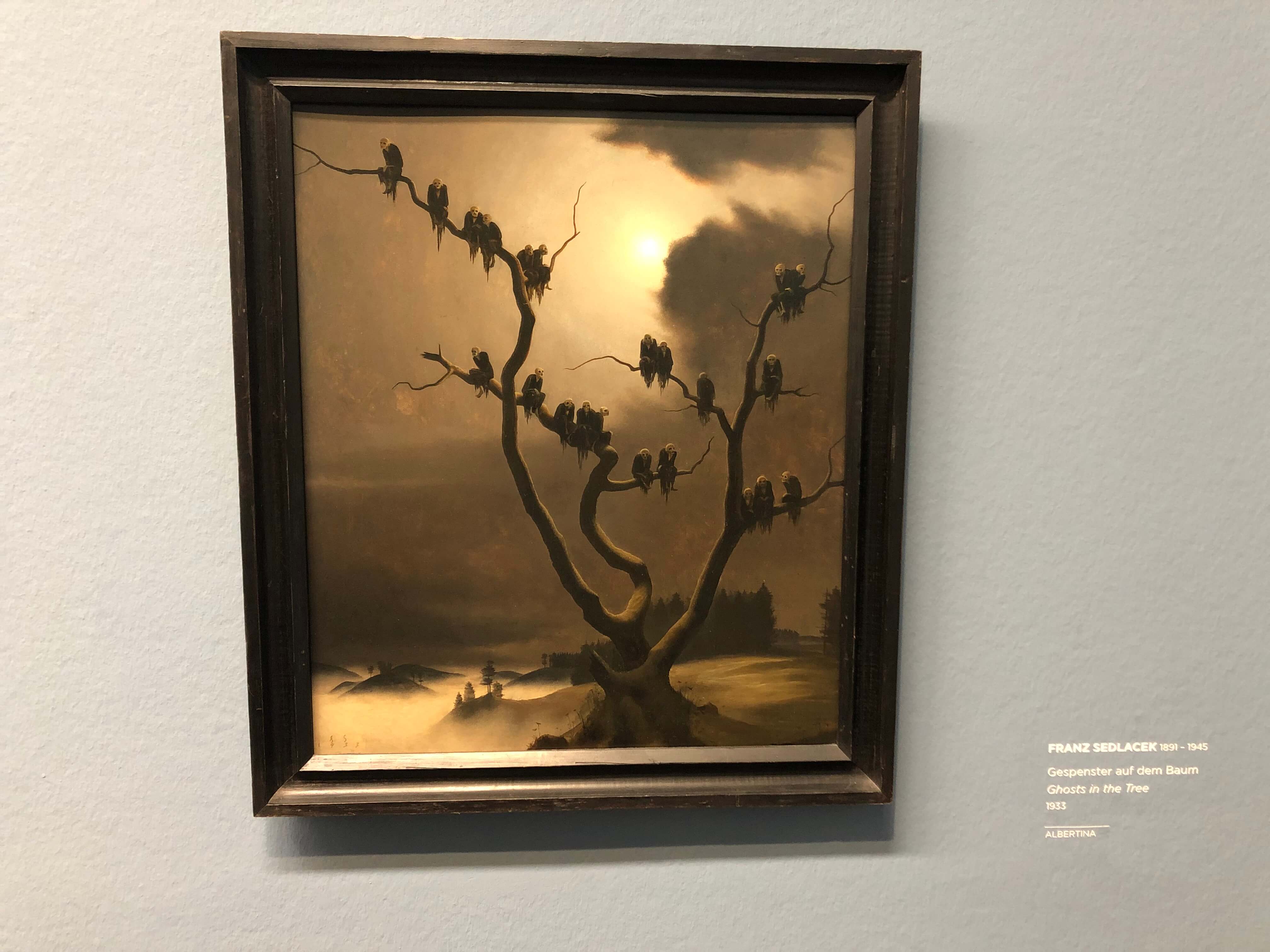The painting is called ‘Ghosts in a Tree’.
- The artist is Franz Sedlacek.
- The year 1933.
- The movement New Objectivity, a relative of Magical Realism.
Twenty-two skull-headed figures, in bedraggled dress, perched on branches overlooking the misty morn.
What do you do when you see this painting? When you stand and confront it with an open mind and heart?
You start to count.
You count your ghosts.

So easy in the safety of an art gallery, other patrons swirling around you. But why so hard in real life?
In reality, we shy away from counting our ghosts. We turn from our darker impulses, the shadowy depths of our psyche. And in doing so, damn ourselves to living the same old patterns, damn ourselves to a life on repeat, a life we do not want.
Haley Joel Osment’s character in The Sixth Sense only finds salvation when he stops hiding and running from the ghosts. They may not be the ghosts of his past, but they signify what he needs to work on. They’re terrifying. But they’re looking for help. His help. That’s his anagnorisis.
Why do shivers run up our arms at that pivotal point in the movie? In the play? In looking into a resonant canvas?
Life is not a narrative. But it might as well be.
We all tell ourselves stories.
We all have long-running monologues in our heads. Dialogues too. We converse with the phantoms that people our existence. We converse with the dead. With dead authors, dead relatives, dead forms of people still living.
How many times have you replayed an argument? Relived the trauma, the sting, the pain, as though it were happening again?
And how many times has that trauma come to you and you’ve ran from it? Have you ever woken in the middle of the night with your heart pounding, thick dream residue still dominating the room? And what do you do?
Make it stop. Don’t think about it. Run.
Incorrect.
Mythology is filled with the human anxiety of confronting one’s fears. Don’t look Medusa in the face. You’ll turn to stone. Don’t cut off the head of a Hydra. Three more will pop up. But that doesn’t stop heroes from trying and succeeding and confronting. Heroes go into the labyrinth to find the Minotaur. They travel to Hades. And then return.
You have unfinished business.
Unfinished business with yourself.
No one gets off easy.
If you aim at something, aim at greatness, aim at virtue, you’ll find you need to confront these monsters.
Don’t make the mistake of thinking others don’t have monsters. Everyone does. But most never confront. Look to their habits, their speech, their actions, and day after day is bloated with escape, with avoidance.
How many seek pain? Discomfort? Sacrifice? How many, when suffering comes knocking on their door, greets it and shakes its hand and doesn’t let go?
You start by counting your ghosts.
In the dead of night, the horrors that afflict your psyche, will make themselves known to you if you’re open to them. And you just gently take stock.
How many ghosts do you truly have?
You’ll count a few obvious ones first. They’ll likely be clustered together. But then you’ll come to a branch that even the most intrepid explorer doesn’t want to count. Open up. Count it.
Each ghost is scar tissue, a plot point in your life, and you must befriend it.
One way to count your ghosts, exorcise your demons, or keep them around in a benevolent manner is to write.
Wrap your ghosts in character and theme and story. If you’re not alternating weeping and laughing hysterically with everything you write, you’ve not found a ghost.